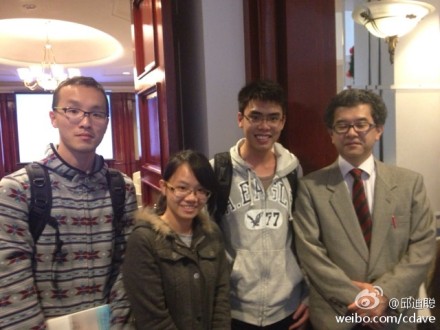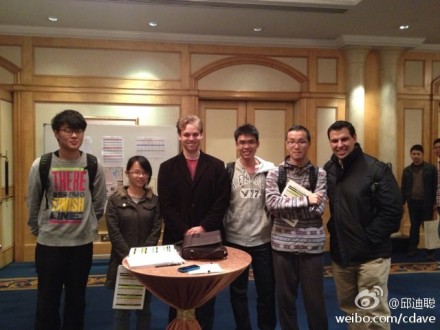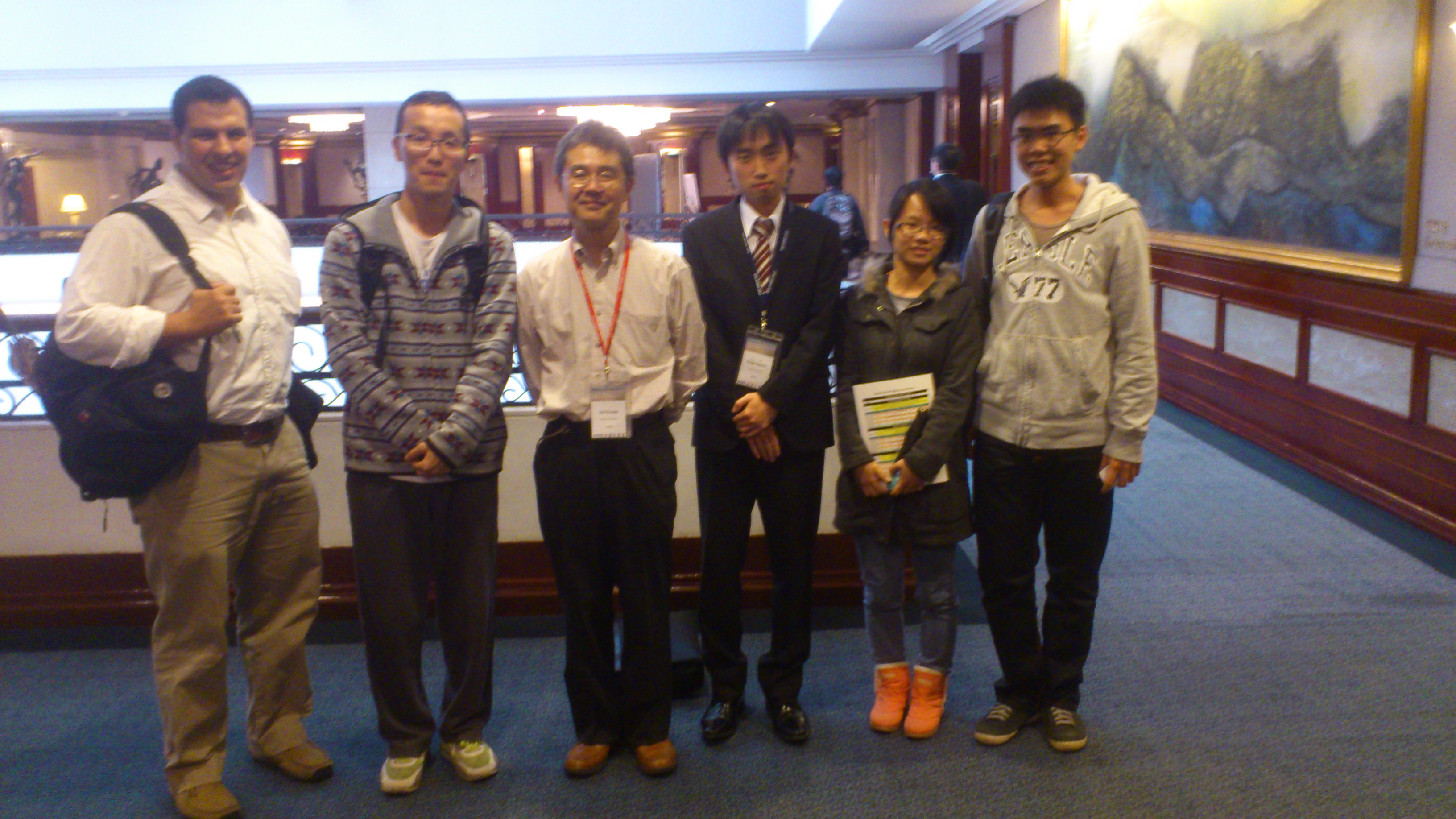2013 IEEE International Conference on Robotics and Biomimetics
Dec 12-14 2013 shenzhen, China
Team members
pengbin
qiudicong
zhudingqiao
here are the picture



Stable Reflex-based walking of forelimbs of a Bio-inspired Quadruped Robot-Modeled Cheetah
Osaka(大阪大学)
Shogo Nakatsu
- talk about reflex-based control
- something like create muscle activity pattern through biographical electric
- it can react 80cm/s
- this is about a four legs robot
one of the researchers
first one
name:Kottaeuser
paderborn
- focusing in 3D vision
- some laser-based
- some measurement
first interview of the researcher
name:C.de Chambrier
live and work in Switzerland
- And here are the answer to the four questions(
The answer are from the speaker not me~~~ and I make it seems like an interview to show you):- What are you major?
- I am focusing on the AI algorithm and the strategy.
- that is to say I am major in the higher level of the robotics.
- How do you get interested in robotics?
- when I am in master’s degree, I am interested in robot
- What impressed you most?
- I am really interested in the strategy design and algorithm design of the robots.
- what do you think about the robot will change the world in the next 10 years?
- I have three point of view about what the robot is going to be in the next decade.
- first of all
- Automatic cars(like google smart car), is going to develop well to drive themselves. and they will be able to work without human affection. But due to the law, they may not be able to get on the road everywhere.
- secondly
- home service robot is to be well developed. But they may be designed for specific task. Not just to make it human like.
- thirdly
- human-like robot are kinds of wired, because human may alloy emotional association with those robots that looks like a human. And well-designed human-like robot may still need a long time to proceed.
- What are the biggest problems that YOU think robotics can solve in our generation?
- I think that the materials are going to be the barrier to come over.
- Currently, we have to use big actuators and movement which can not be smooth. The energy cost is high that a mobile robot has to carry a big battery, and yet the energy runs out so quickly. Hence, new materials that provide actions like a human body and in low energy cost are required for the future development of robotics.
- What are you major?
second interview
a lecturer
name:Inaki Rano
from UK university of UIster
have worked 6 years
- talk about Direct collocation for two dimensional motion camoutflage with non-holonomic, velocity and acceleration constraints
- The movement of the human’s hand between two location is always on a 3D plane, and he wanted to applied this phenomenon in object moving or obstacle-avoidance tasks for a grasping robot. He had mathematically proved a strong-related theory about this phenomenon
- And here are the answer to the four questions(
The answer are from the speaker not me~~~ and I make it seems like an interview to show you):- What are you major?
- all kind of fields in the robotics
- How do you get interested in robotics?
- when I am in college, I am interested in robot
- What impressed you most?
- everything in the robot
- what do you think about the robot will change the world in the next 10 years?
- The robot may be very common in the future life and every one will notice it
- What are the biggest problems that YOU think robotics can solve in our generation?
- The Model that use to the robot may be one of the most difficult part in the robotics.
- What are you major?
a researcher talk about using a smart phone to connect the Robot
a girl from China State Key lab of Robotics and System
- focusing in the protocol design
Direct and indirect social robot interactions in a hotel public space
a japanese researcher from Tsukuba(筑波大学)
name:潘雅冬
- talk about the social robot that react in the hotel
- and he talk about three patterns
- passing
- looking
- staying and approaching
- using 3 kinds of robot(human-like)
- NAO
- Gemini
- Palro
- use kinect: Methodology
- presence
- position
南开大学教授
段峰博士
建立系统,一种synchronous and control system
- also develop some kinect app on the nap robot
third interview
name:Yujin Wakita
work in AIST( The National Institute of Advanced Industrial Science and Technology)
have participate in robotic for 23 years
focus in UI(人机交互)
- application:
- mobile assist
- parking
- power system of nurse
- toilet robot
- And here are the answer to the four questions(
The answer are from the speaker not me~~~, and I make it seems like an interview to show you):- What are you major?
- user interface, human assistance
- How do you get interested in robotics?
- when I am in high school, I am interested in robot
- What impressed you most?
- the robot that can assist human
- what do you think about the robot will change the world in the next 10 years?
- It is hard to say.Lots of designs and ideas are occurring. And it is hard to tell whether the assistance robots may develop towards human-like or functionally specialized.
- What are the biggest problems that YOU think robotics can solve in our generation?
- the social problem that may cost by the robot
- What are you major?
Geometric balancing control of humanoid robots
LaSabana university
name:Mario Arbulu
- societal side
- front side
- use attitude sensor